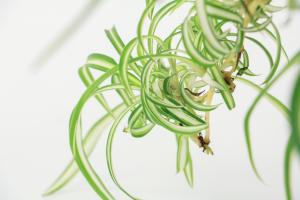How to Plant a Palm Tree in Florida
Florida is renowned for its sunny beaches, white sand, and breathtaking palm trees. This state’s unique landscape is the result of its tropical climate, which favors the growth of palm trees. Numerous palm species can survive and thrive in Florida’s warm and humid environment. If you want to enjoy the beauty of Florida’s palm trees in your backyard, you need to learn how to plant them the right way. Here are a few tips to help you with the process.
Prepare the Soil
The first step to planting any tree is to prepare the soil. In Florida, the soil is often sandy and has poor water retention capabilities. Therefore, you need to prepare the soil to ensure it provides the necessary nutrients to your palm tree. Dig a hole twice the depth and width of the tree canopy. Mix together the native soil and compost in a 50:50 ratio before backfilling the hole. This mixture will provide nutrients and improve water retention, giving your palm tree a solid base to grow from.
Select Your Palm Tree
Choosing the right palm tree for your landscape is critical. In Florida, there is a wide variety of palm species to choose from, including the popular Royal Palm, Foxtail Palm, and Coconut palm trees. Select a palm species that suits the purpose of your landscape. Consider factors such as height, color, shape, and growth rate. Choose a healthy tree that has a straight trunk, no broken fronds, and no visible signs of pests or diseases.
Plant the Palm Tree
When planting your palm tree, you need to be mindful of the location. Palm trees prefer full sunlight and well-drained soil. Place the tree in the hole and backfill it with the soil mixture. Tamp the soil gently around the base of the tree to remove any air pockets. Water the palm tree immediately after planting to settle the soil and to reduce the risk of transplant shock. Water it regularly for the first year to help it establish strong roots.
Maintain Your Palm Tree
Proper maintenance is critical for the survival of your palm tree. Fertilize your palm tree twice a year with a slow-release palm fertilizer. Apply a 2-3 inch layer of mulch around the base of the tree to help retain moisture in the soil, discourage weed growth, and reduce soil temperature fluctuations. Regularly prune dead or yellow fronds to improve the tree’s appearance and health.
In Conclusion
Planting a palm tree in Florida can enhance your landscape’s beauty and provide plenty of natural shade. With proper soil preparation, palm species selection, planting techniques, and post-planting care, your palm tree will grow strong and flourish. Remember, it is important to maintain your tree to ensure its well-being and longevity.

 how many times do yo...
how many times do yo... how many planted tre...
how many planted tre... how many pine trees ...
how many pine trees ... how many pecan trees...
how many pecan trees... how many plants comp...
how many plants comp... how many plants can ...
how many plants can ... how many plants and ...
how many plants and ... how many pepper plan...
how many pepper plan...
































